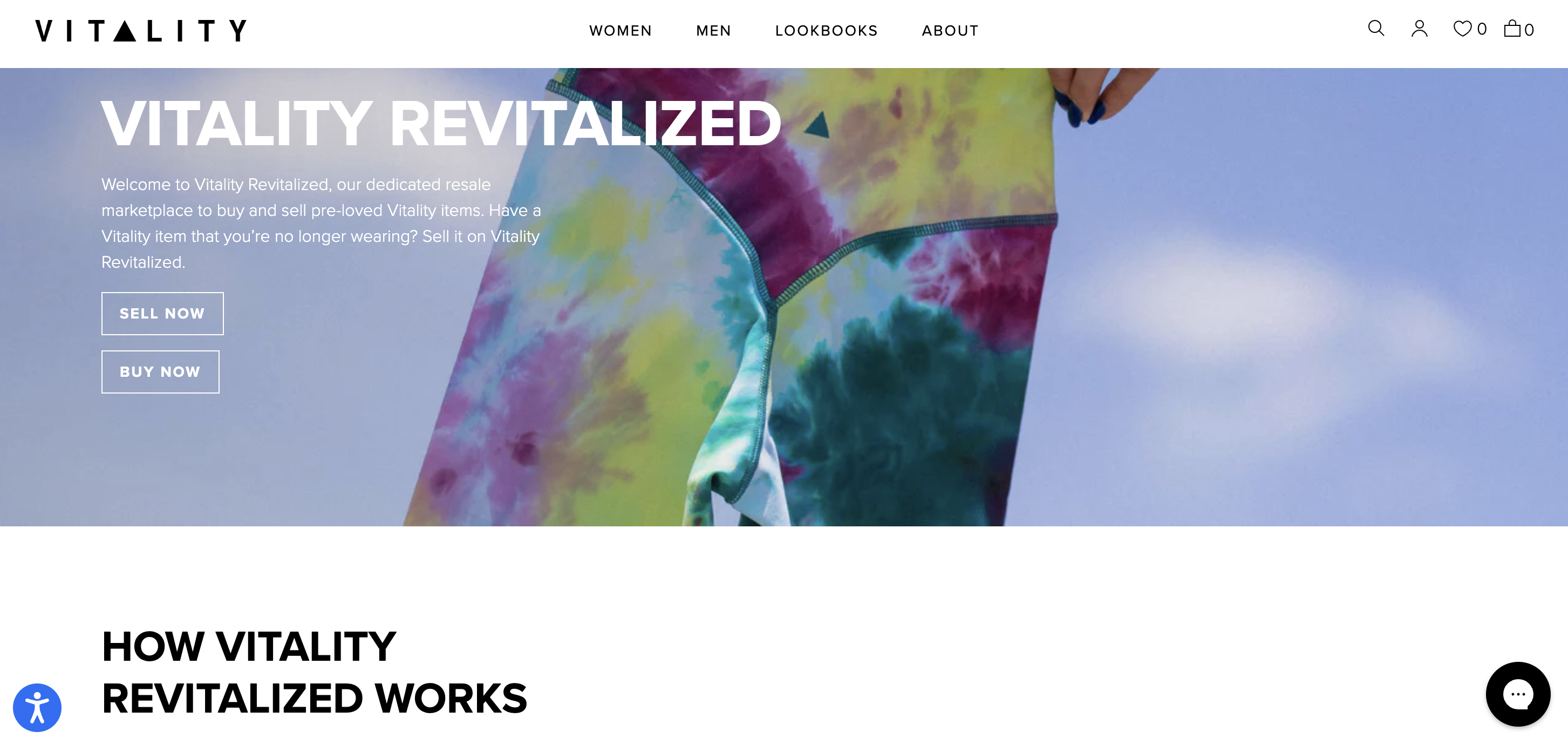Sustainability in E-Commerce: From Proof to Practice.

Quick Summary As consumers become more conscious of the environmental and social effects of their purchases, the demand for sustainable products and services continues to increase. And of course, merchants will have to adopt new and relevant strategies to meet this rising demand for sustainable products. Featuring our recent work with body-positive athleisure brand, Vitality.
As the e-commerce market progresses, sustainability is gaining momentum as a crucial factor for both businesses and consumers. In fact, the sustainable E-Commerce market is projected to surpass USD 40.75 Billion by 2030 at a CAGR of 15.38% from 2023 to 2030 as per Skyquest data.
As consumers become more conscious of the environmental and social effects of their purchases, the demand for sustainable products and services continues to increase. And of course, merchants will have to adopt new and relevant strategies to meet this rising demand for sustainable products. Luckily, technological progress is facilitating businesses to integrate sustainable practices at a lower cost and with greater ease.
Don’t just talk the talk
Today, consumers are less loyal and more conscious. As a result, eCommerce companies are facing increasing pressure to align their brand values with their customers -especially younger generations- who are adopting an unwavering stance towards protecting the environment and are increasingly willing to vote with their wallets and walk away from their brands they previously loved to brands that align with their values.
When it comes to sustainability, the demonstration is key; proactively showing your brand’s carbon footprint and actively introducing brand initiatives targeted towards a greener economy. It could be something as simple as the introduction of recycled, sustainable packaging material and having this information displayed clearly for customers at checkout and product descriptions pages. For instance, in the US, UPS provides retailers with the choice of paying a nominal charge to compute and neutralize the environmental impact of every package that is shipped. UPS compensates for the emissions by supporting relevant environmental initiatives.
Rebranding to cater to shoppers' altruistic goals can also be advantageous. Take a second and imagine the adoption rate if "Regular Shipping" were relabeled as "Low Carbon Emission Shipping." Now this is something that will win you environmentally-conscious customers versus just merely stating “Sustainability” on your brand’s about us page.
Think outside “the website”
According to Retail Dive, online retailers face a return rate of over 20%, compared to their ‘brick and mortar’ counterparts who have a 9% return rate. Now picture the carbon footprint of all the packages you send to your customers PLUS the 20% that are returned. In the US alone, approximately 5 billion pounds of returned products end up in landfills every year. Variables such as packaging, unsuccessful deliveries, and expedited orders can compound and increase the carbon footprint of an online purchase.
Taking measures that minimize return is another way for eCommerce brands to prioritize sustainability. By offering comprehensive product descriptions and 3D product images, brands can provide customers with a clear understanding of the product, which can lead to fewer returns. For instance, advanced 3D imagery can provide a realistic depiction of the product and enable customers to make informed buying decisions- negating the need for returns.
Walk the Extra Mile
Merchants have long believed that sustainability and profitability are incompatible notions. However, an increasing number of companies are proving that this belief is untrue. In fact, even for-profit organizations can play a part in a virtuous cycle while still making a profit.
Patagonia is one such example. In a mic drop move, Patagonia’s Yvon Chouinard announced his company’s profits would go directly toward climate initiatives. While this approach may not be feasible or desirable for many businesses, it has created a ripple effect, prompting other enterprises to reassess their environmental, social, and governance (ESG) practices, which are becoming increasingly in demand among investors too.
Along the same lines, we worked with our client, Vitality, a body-positive activewear brand, on the ideation and introduction of their dedicated peer-to-peer (P2P) resale marketplace. Powered by our partners Loop Returns and Recurate, Vitality Revitalized offers customers a seamless process to buy and sell pre-loved Vitality items.

To encourage engagement it was crucial to build a hassle-free experience where users can effortlessly upload product photos and descriptions and even set a suggested selling price in a streamlined manner. As an additional measure to guarantee quality and authenticity, the brand then carefully verifies and approves each item before showcasing them on the resale page. Buyers can explore original product images and access comprehensive information about color and style options.
Once a transaction is completed, the seller receives a convenient prepaid shipping label, allowing them to send the product directly to its new owner - eliminating any environmental impact and logistical hurdles typically associated with shipping to a third-party warehouse.
After the buyer has confirmed the item's condition and satisfaction, the seller will receive compensation either as a store credit or cash through Paypal. This flexibility in preference accommodation ensures the seller's needs are met and their efforts are rewarded accordingly. While Vitality embraces a fair share of sustainability best practices including more efficient manufacturing practices, higher-quality fabrics, and recycled materials, Vitality Revitalized is a step forward in reiterating the brand's commitment to a greener economy.
At Avex, we plan, strategize, and consult on the best possible solutions to optimize your customers' experiences and move your brand at the speed of culture. We make your mission our mission and deploy our expertise to constantly bring new ideas to the table.
Explore new eCommerce trends, build your brand, and solidify your online community!



